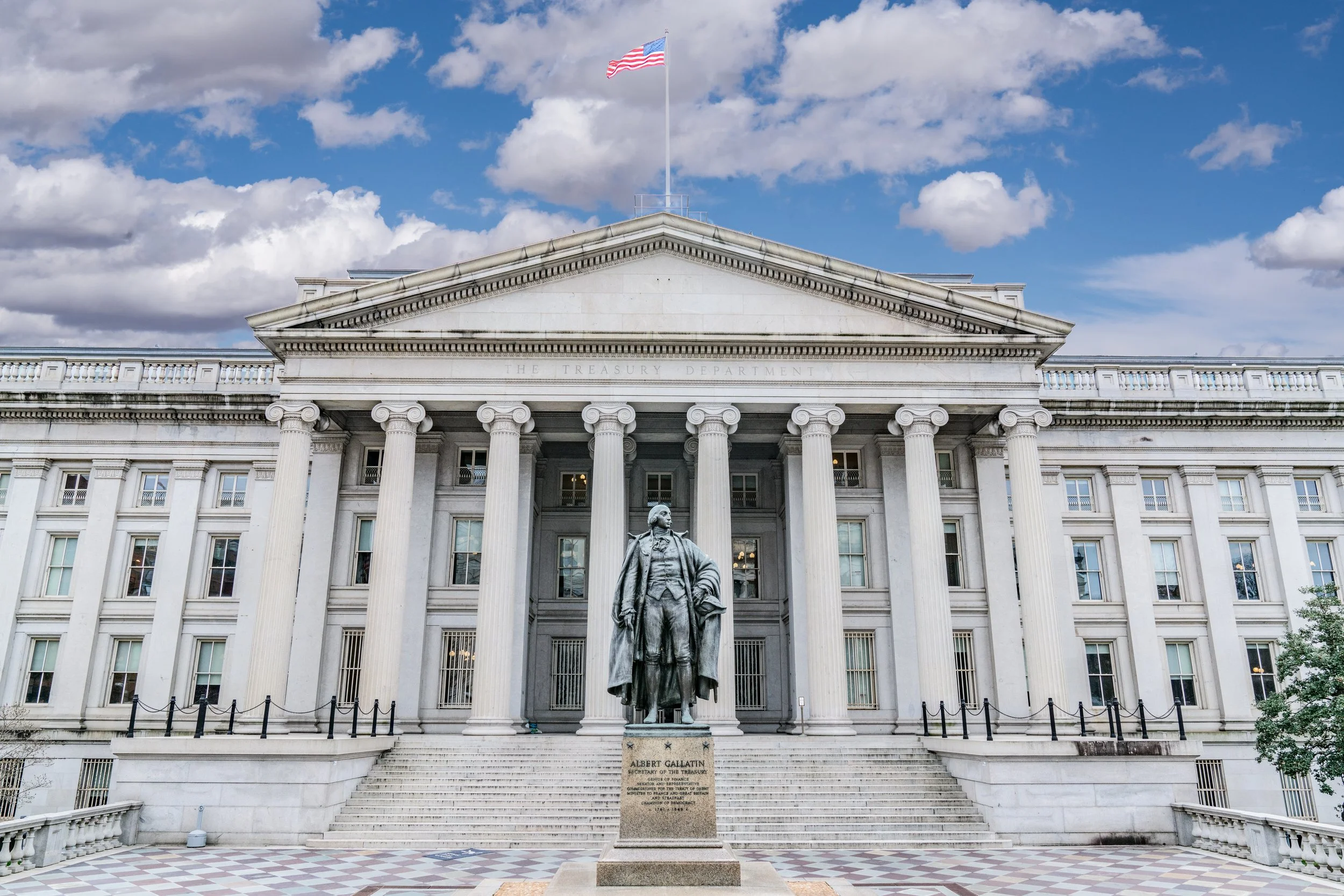Author: Lysle Boller
Did Tax Cuts and Jobs Act of 2017 Increase Revenue on US Corporations’ Foreign Income?
Despite a complete overhaul of the US system of international corporate taxation in the Tax Cuts and Jobs Act of 2017, taxes on US corporations’ foreign income are about the same after the law’s enactment as before.
When Does Federal Debt Reach Unsustainable Levels?
PWBM estimates that---even under myopic expectations---financial markets cannot sustain more than the next 20 years of accumulated deficits projected under current U.S. fiscal policy. Forward-looking financial markets are, therefore, effectively betting that future fiscal policy will provide substantial corrective measures ahead of time. If financial markets started to believe otherwise, debt dynamics would “unravel” and become unsustainable much sooner.
A Wide Range of Policy Bundles Can Stabilize Federal Debt while Growing the Economy
Debt ceiling debates would become less frequent if Congress adopted fiscal measures that limited the growth of federal government debt relative to the size of the economy. Without changes in fiscal policy, we project that the debt-to-GDP ratio will grow from 100 percent in 2024 to 190 percent in 2050. Contrary to conventional thinking, there exists a wide range of policy options that can reduce the growth of debt while growing the economy.
Income-Driven Repayment Plans: Modeling Take-up Rates
Federal student loan borrowers can currently choose between several repayment options. When estimating program costs, government agencies have considered several different behavioral repayment models. We find that the most financially savvy rule – where borrowers select the repayment option that minimizes the present value of their future repayments – best explains current borrower choices among repayment options that exist prior to the new Income-Driven Repayment Plan (IDR) “SAVE” plan to be implemented in July 2024.
Biden’s New Income-Driven Repayment (“SAVE”) Plan: Budgetary Cost Estimate Update
PWBM estimates that President Biden’s new Income-Driven Repayment Plan (the “SAVE” plan) will cost $475 billion over the 10-year budget window. This estimate includes the Supreme Court’s decision to invalidate President Biden’s Student Loan Forgiveness Plan and the Department of Education’s final regulations announced on July 10, 2023.
The Build It in America Act: Budgetary and Macroeconomic Effects of Title I
PWBM estimates that Title I of the Build It in America Act would add $76 billion to the budget deficit over the next decade and reduce deficits by $18 billion during the subsequent second decade. It would temporarily boost business investment and GDP during the next two years while lowering GDP in subsequent years. If lawmakers made the extensions permanent, the budgetary cost would rise to $1.25 trillion over the next two decades and GDP would largely remain unchanged, as the tax incentive effects and debt effects mostly offset.
Budgetary Effect of “SAVE Students Act”
PWBM estimates that “SAVE Students Act” would cost about $276 billion less over the 10-year budget window relative to the Income-Driven Repayment (IDR) plan proposed by President Biden.
The Tax Cuts for Working Families Act: Estimated Budgetary and Distributional Effects
PWBM estimates the Tax Cuts for Working Families Act would reduce federal revenues by $96 billion over a decade, cutting taxes for a majority of households in 2024. Households in the bottom quintile households, and those in the top 1 percent, generally would not benefit. As an illustration, we also consider making the provisions permanent, which raises the estimated ten-year budget cost to be between $419 billion and $527 billion.
The Fiscal Responsibility Act of 2023: Budget Cost Estimates of the Debt Ceiling Agreement
We estimate the Fiscal Responsibility Act (“FRA”) of 2023 will reduce noninterest spending by $1.3 trillion over the 10-year budget window using standard scoring assumptions. If discretionary spending in Fiscal Year 2026, after sequestration is no longer in effect, deviates from standard scoring assumptions, the spending reduction could be as low as $234 billion or as high as $1.8 trillion.
Why the Debt Ceiling Deadline is Closer Than Previously Expected
The deadline to raise the nation’s debt ceiling is closer than previously thought because tax receipts in April fell below projections. PWBM estimates that receipts are running $150 billion below government projections for fiscal year 2023, most likely due to a decline in capital gains income and weakening corporate profit margins.
The Long-Term Budget Effects of Permanently Extending the 2017 Tax Cuts and Jobs Act’s Expiring Provisions
Several revenue and spending provisions in The Tax Cuts and Jobs Act (TCJA) are scheduled to expire (“sunset”) by the end of 2025. We estimate that “extenders” (“no sunset”) would increase the federal debt held by the public from 226.0 percent of GDP to 261.1 percent of GDP by 2050.
President Biden’s Proposal to Extend the Medicare Trust Fund
PWBM estimates that President Biden’s new Medicare proposal would increase the solvency of the Medicare trust fund from the year 2028 to 2053. However, a significant share of that increase comes from redirecting existing (current law) revenue to the trust fund. Another portion comes from unspecific expenditure reductions that lack the details required to score. Counting only new income without unspecified expenditure reductions, we project, as an illustrative alternative, that the HI trust fund would remain solvent until 2037.
The Excise Tax on Stock Repurchases: Effects on Shareholder Tax Burdens and Federal Revenues
President Biden has proposed raising the current excise tax rate on stock repurchases from 1 percent to 4 percent. We estimate that, for domestic shareholders, this tax increase would eliminate about 85 percent of the current-law tax preference for dividends over stock repurchases.
Budgetary Cost of Newly Proposed Income-Driven Repayment Plan
We estimate President Biden’s newly proposed Income-Driven Repayment (IDR) Plan will cost between $333 to $361 billion over the 10-year budget window, more than twice as much as the cost estimate released by the Biden Administration. These costs are in addition to the one-time cost of direct loan forgiveness that we previously estimated at $469 billion.
Long-Term Financial Implications of Current Federal Budget Policies
Under current law, we project that national debt will rise to 225% of GDP by 2050 and continue to rise thereafter. Changing demographics will reduce future economic growth.
The Biden Student Loan Forgiveness Plan: Budgetary Costs and Distributional Impact
President Biden’s new student loan forgiveness plan includes three major components. We estimate that debt cancellation alone will cost up to $519 billion, with about two-thirds of the benefit accruing to households making $88,000 or less. Loan forbearance will cost another $16 billion. The new income-driven repayment (IDR) program would cost another $70 billion, increasing the total plan cost to $605 billion under strict “static” assumptions. However, depending on future IDR program details to be released and potential behavioral (i.e., “non-static”) changes, total plan costs could exceed $1 trillion.
Forgiving Student Loans: Budgetary Costs and Distributional Impact
We estimate that forgiving federal college student loan debt will cost between $300 billion and $980 billion over the 10-year budget window, depending on program details. About 70 percent of debt relief accrues to borrowers in the top 60 percent of the income distribution.
Senate-Passed Inflation Reduction Act: Estimates of Budgetary and Macroeconomic Effects
PWBM estimates that the Senate-passed version of the Inflation Reduction Act would reduce non-interest cumulative deficits by $264 billion over the budget window. The impact on inflation is statistically indistinguishable from zero. GDP falls slightly within the first decade while increasing slightly by 2050. Most, but not all, of the tax increases fall on higher income households.
Inflation Reduction Act: Comparing CBO and PWBM Estimates
PWBM and CBO find an almost identical impact of the Inflation Reduction Act of 2022 (“IRA”) on the budget, with small differences stemming from the timing of the corporate minimum tax revenue. The impact on inflation is statistically indistinguishable from zero for either estimate.



















